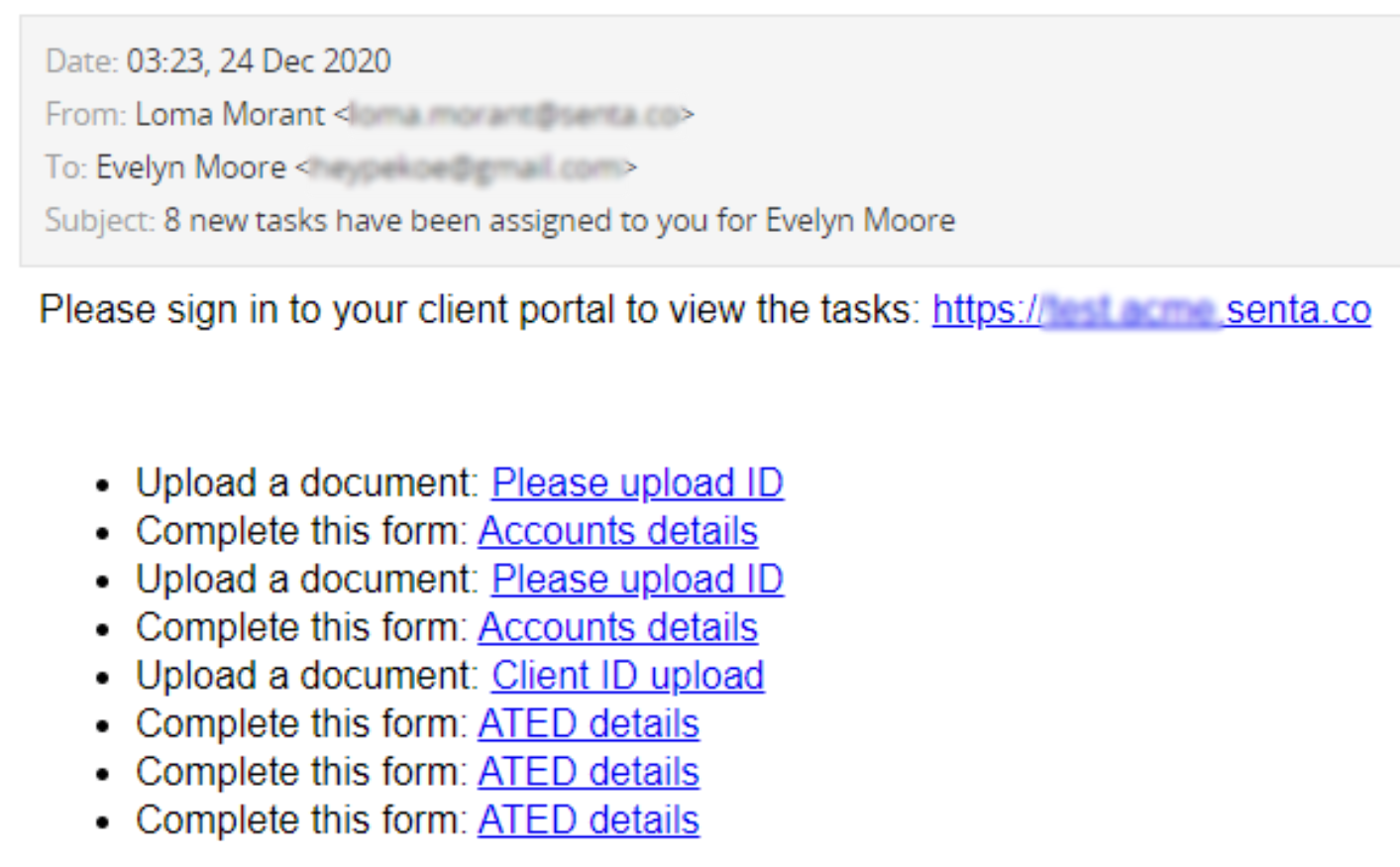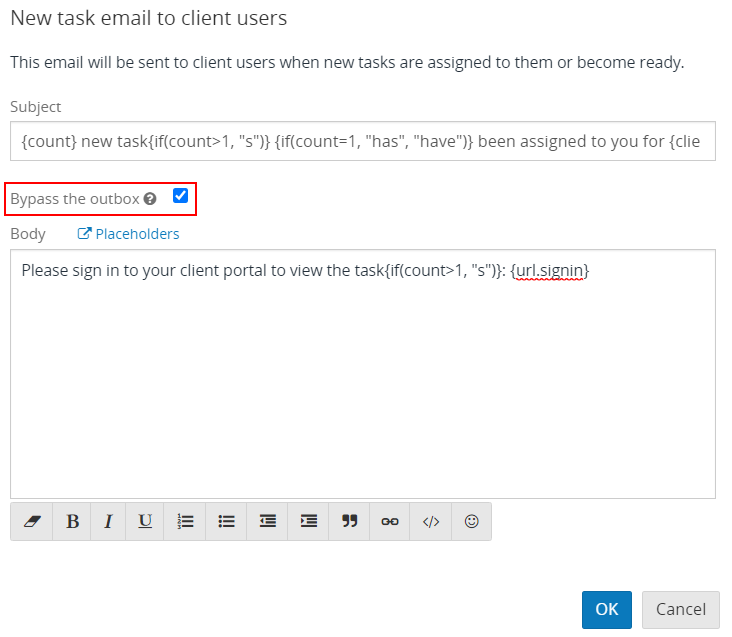Notifications
There are a range of notifications available in Senta, both for Practice users and Clients, and different ways to receive them.
Practice user notifications
Each user has access to a Notifications tab under their user profile viaYour account > Your profile. Go to the Notifications tab to update your notification preferences.

There is a list of events that you can choose to be notified about, with options for how you want to receive them - via the email address on your user profile, the notification globe, or both. You can also turn unwanted notifications off completely.
The list of possible notifications users can receive are as follows:
-
A task has been assigned to you
-
A task assigned to you has become ready
-
A task becomes overdue
-
Overdue tasks reminder
-
Notifications from the “send notification” task type
-
A new document has been uploaded by a client
-
A zip file has been generated
-
New questions or comments from clients via client portal
-
A client completes a task(includes signatures received)
-
Advisory notifications
-
Xero notifications
-
Client data has finished importing from CSV
-
An email failed to send
-
Failed sign in attempts
Failed sign in attempts
This notification is triggered whenever anyone attempts and fails to log into Senta. However, this branches off dependent on what kind of user can't log in - a client, or a practice user.
If this is notification is enabled:
-
Account managers will receive a notification if one of their clients can't log in.
-
All users with Practice manager permissions will receive a notification that anotheruser has failed to log in.
Notifications relating to client portal actions
If a client completes a task, uploads a document or raises a new question or comment via their portal, the user assigned asAccount managerfor that client will be notified.
Notification emails
There are a number of emails that Senta sends out on your behalf - for example when you add new practice users, when you assign a task to a client, or when you request a signature from a client. The templates for these emails can all be edited to suit the way that your practice prefers to address your staff and clients.
To view the templates for these notification emails, go to Settings > Practice details > Emails. From here you can disable/enable notification emails and edit the email templates.

Edit notification emails
If you would like to change the wording of a specific email template, select the title of the template to open the template editor.

You can make changes to theSubjectandBodyhowever, as these email templates are global templates and are generated for any clients, tasks, documents etc, the wording must be generic. For example, you cannot add "Your payslip is attached" to the New document template if you are going to be uploading documents other than payslips.
Once you are happy with your changes, selectOKand thenSave.
Placeholders
It is possible to use placeholders in theSubjectandBodyif you would like to personalise the emails.
If you would like to list the tasks assigned to the client in the New task email template, you can use the placeholder {tasks}:

The email template will look like this:

It is important that you do not remove the existing placeholders such as{url.signin}and any{count}or{if}placeholders. Some notification email placeholders use a syntax which means that the wording of the email can vary depending on how many tasks, for example, have been assigned to the client.
If you assign 1 task to a client, they will receive an email with the subject line "1 new task has been assigned to you..." If you assign 3 tasks to a client before sending the notification email from your outbox, they will receive an email with the subject line "3 new tasks have been assigned to you..."
This syntax uses "if" clauses in much the same way that Excel uses them, using the format: if { clause, option1, option2 }
If "clause" is true, option1 will be used. If not, option2 will be used.
Using the email subject above as an example:
{count} new task {if(count>1, "s")} {if(count=1, "has","have")} been assigned to you
This will could display as "1 new task has been assigned to you" or "3 new tasks have been assigned to you" dependent on the number of tasks assigned to the client.
If you have the Practice outbox switched off for your workspace, or if you choose to bypass the outbox, the count and {tasks} placeholders will not work for the notification emails. For example, if you upload 3 new documents for a client, they will receive 3 separate emails.
Bypass the Practice outbox
If you have the Practice outbox turned on for your workspace, any notification emails will also queue in the outbox. If you would prefer these notification emails to send immediately out of Senta instead, can tickBypass the outboxon each email template.

Bypass the outboxis not available forWelcome email to new practice usersas this bypasses the outbox by default.
If you choose to bypass the outbox, thecountandtasksplaceholders will not work for the notification emails. For example, if you upload 3 new documents for a client, they will receive 3 separate emails.
Disable notification emails
All notification emails, excluding the two welcome emails, can be disabled using the tick boxes. Remember to selectSavewhen finished.